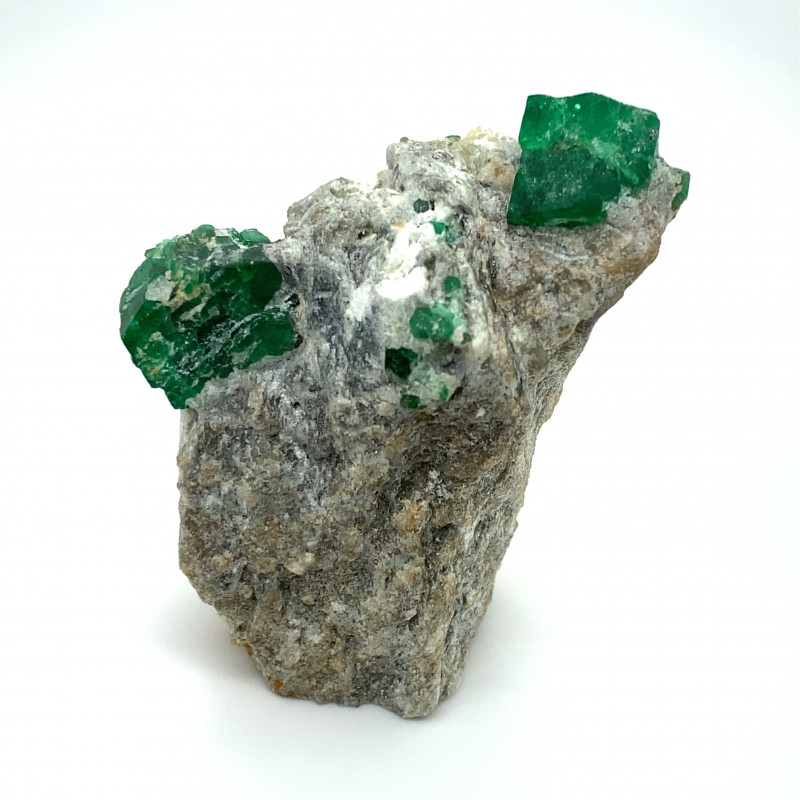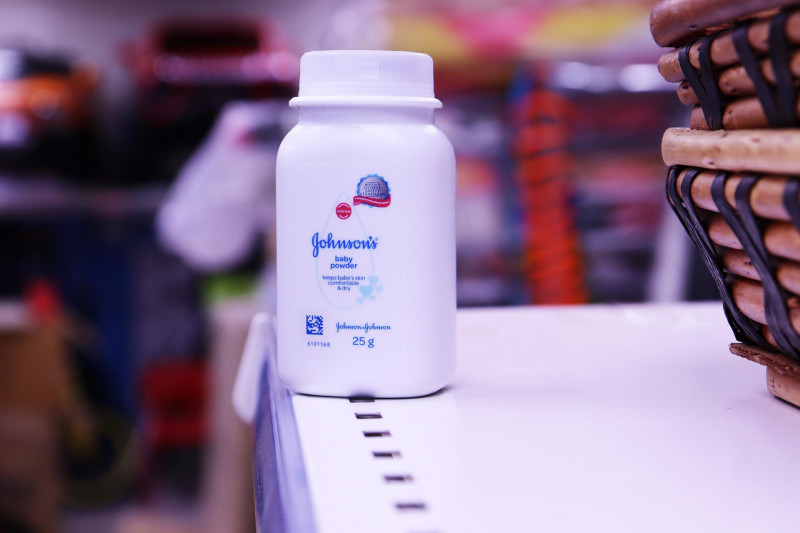
タルク鉱物:特性、意味、価値など
 タルクは、世界で最も柔らかい物質として知られ、粉末状のタルクパウダーまたはタルカムパウダーとしても知られる天然粘土鉱物です。タルクは他の宝石と関連付けられることが多いものの、宝石として認識されることはあまりありません。
タルクは、世界で最も柔らかい物質として知られ、粉末状のタルクパウダーまたはタルカムパウダーとしても知られる天然粘土鉱物です。タルクは他の宝石と関連付けられることが多いものの、宝石として認識されることはあまりありません。
なぜタルクは宝石とはみなされないのでしょうか? タルクは柔らかすぎてジュエリーには使えないからです。しかし、ソープストーンのようにタルクを多く含む石は装飾品として使われています。
さらに、タルクは多くの製品の重要な成分であり、工業的にも広く利用されています。
今日は、タルクの用途、歴史、治癒特性、種類、価格について詳しく説明します。
 画像クレジット: Rob Lavinsky、iRocks.com – CC-BY-SA-3.0
画像クレジット: Rob Lavinsky、iRocks.com – CC-BY-SA-3.0
タルクストーンについて
タルク(別名「ケライト」)は、結晶や塊状の石として形成されることがありますが、結晶となることは稀です。純粋なタルクは、真珠のような光沢を持つ白色から無色です。しかし、鉄や酸化アルミニウムなどの内包物によって、茶色、灰色、黄色、ピンク色など、様々な色合いのものが生まれることがあります。
「タルク」と言うとき、次の 4 つの意味のいずれかを指していると考えられます。
タルク鉱物
タルクの岩石の種類(後ほど説明します)
工業用タルクパウダー
化粧品用タルクパウダー
そういえば、タルクは何に使われるんですか?
タルクの用途
タルクの原料は様々な業界で使用されています。タルク、タルカムパウダー、ケイ酸マグネシウム、化粧品用タルク、タルカムといった名称はすべてタルクを指します。通常、タルクは粉砕され、乾燥されて柔らかい白色のタルカムパウダーとなり、単独で、または他の成分に配合されて使用されます。
アプリケーションの多様性は、その独自の特性から生まれます。
吸収性と摩擦軽減:肌を乾燥させ、かぶれを防ぎます。粉砕または粉末状の成分が固まるのを防ぎます。
脂っぽいテクスチャー:潤滑性があり、化粧品を滑らかでシルキーな状態にします
増粘剤:ケーキ、塗料、陶磁器などに添加
電気と熱に耐性があります。理科実験室のカウンター、ゴム、配電盤などに使用されます。
鉱物の面では、タルクの特徴は何ですか?
タルクの仕様と特性
タルクの化学式はMg3Si4O10(OH)2で、水和ケイ酸マグネシウムを意味します。一般的な不純物としては、フッ素、鉄、アルミニウムなどがあります。
タルクの滑りやすい質感はその構造に由来します。薄いシートが積み重ねられており、しっかりと固定されていないため、簡単に滑り落ちてしまいます。
元々のモース鉱物硬度スケールでは、タルクの硬度は標準ランク 1 であり、最も傷つきにくいことを意味します。
靭性やへき開性といった要素も耐久性に影響します。残念ながら、タルクのへき開性は完全(最も弱い)であるため、破損しやすいという欠点があります。
タルクの鉱物特性は次のとおりです。
色: 通常は緑、白、灰色。時には茶色、黄色、ピンク、青、黒、無色の場合もあります。
結晶構造:単斜晶系または三斜晶系
光沢:真珠のような、脂っぽい、または鈍い
透明性:半透明(結晶)または不透明(塊)
屈折率:1.54~1.59
密度:2.55~2.83
胸の谷間:ぴったり [001]
骨折:不均一で平ら、繊維状または雲母状
縞模様:白
発光: ソープストーン種では蛍光が見られることがあります。SW-UV ではピンク、黄色、または緑色、LW-UV では淡いピンク、緑がかった黄色、または黄色です。
多色性:暗い色の石に時々見られる;弱い;無色からやや茶色

タルクの種類
タルクには、多くの半貴石のような種類はありません。尋ねる人によって異なりますが、タルクにはソープストーンとステアタイトの2種類があります。
ソープストーンは、主に滑石の塊が他の鉱物とともに固まってできた、密度が高くマグネシウムを豊富に含む変成岩です。葉状構造(薄い板状のものが積み重なった構造)をしています。「ソープロック」または「サポナイト」と呼ばれることもあります。
しかし、鉱山労働者や工芸品販売業者は、彫刻によく使われる石鹸のような柔らかい岩石の総称として「ソープストーン」を使うことがよくあります。実際には、彼らが指す石の多くは蛇紋石やアラバスターです。
ステアタイト: 石鹸石の同義語か変種か?
「ステアタイト」をソープストーンの同義語として使用する人もいますが、両者を区別する人もいます。
後者は、ステアタイトを、葉状体がなく、ほぼ完全にタルクである石鹸石の一種であると考えています。
ソープストーンとステアタイト(分離した場合)はどちらもタルクよりわずかに硬度が高く、1~2.5です。つまり…それでもかなり柔らかいということですね!
タルク(ソープストーン)の価値特性
タルク自体は宝石や装飾品として販売されていませんが、ソープストーンは販売されています!以下では、ソープストーンの価値に影響を与える要因について詳しく説明します。
色
ソープストーンの色は産地によって大きく異なりますが、白、灰色、緑、茶色、赤などがあります。白、青、緑の要素が混ざっている場合もあります。多くは灰色から灰緑色です。
カット
ソープストーンはほとんどの場合彫刻または彫像されており、まれにカボションカットのものもあります。
芸術的なソープストーンには、置物や彫刻などが含まれます。建築用のソープストーンとしては、調理器具、バーカウンター、シンクなどがあります。
サイズ
ソープストーンの原石は巨大なものが多く、数ポンドにも及ぶ彫刻に適しています。彫刻の規模が大きいほど価格は高くなります。
治療
ソープストーンは1,000~1,200℃に加熱されると、クリストバライトとエンスタタイトという2つの新しい石に変化します。その後、硬度は5.5~6.5に増加します。
それが何になるかはご存じでしょうが、タルク結晶はあなたに何をもたらすのでしょうか?

タルクの治癒特性
タルクは宝石ではありませんが、癒しの石です!
無色から白色のタルクは、他の白い宝石と同様に、高次の霊的意識を目覚めさせる力を持っています。当然のことながら、これらのクリスタルは精神性の中心であるクラウンチャクラに最適なチャクラストーンです。
グリーンタルクは、他の グリーンジェムと同様に、滋養、グラウンディング、ストレス軽減などの効果をもたらします。
身体的および感情的な治癒能力について詳しく見てみましょう。
身体の治癒
タルク結晶は、特に不安による不眠症の方に、良い睡眠リズムを確立するのに役立つと言われています。また、腎臓と肝臓の機能を改善する効果もあります。
感情的な癒し
感情面では、タルクは心を落ち着かせ、安定させる効果があります。クリスタルヒーラーは、タルクが静寂をもたらし、マインドフルネスを促進すると高く評価しています。ストレスを軽減したり、睡眠の質を高めたりするために、タルクを使った瞑想を推奨する人も多くいます。
クリスタルヒーリング自体と同様に、タルクの歴史は何世紀も遡ります。
タルクの意味と歴史
「タルク」という言葉は、アラビア語の「talq」とペルシャ語の「tālk」に由来しています。雲母鉱物との類似性から、「純粋な」または「雲母」と訳されています。
古代の人々は、亜セレン酸塩を含む多くの鉱物をタルクと呼んでいました。中世ラテン語の「タルカム」という言葉は、かつては様々な光沢のある鉱物を指していました。
証拠は少ないものの、ゲオルギウス・アグリコラが1546年にタルクを正式に命名したと言われています。しかし、ご想像のとおり、タルク、特にそのソープストーンの品種の歴史はそれよりずっと昔に遡ります。

古代タルクと石鹸石の歴史
タルクや石鹸石の最初の発見は定かではありませんが、数千年前に遡ります。
最も古い考古学的証拠の一つは、紀元前約 7,000 年頃のフィンランドの「フイッティネンのエルクの頭」と呼ばれるヘラジカの頭の石鹸石の彫刻です。
石器時代、スカンジナビア人はソープストーンを彫刻に使い始めました。彼らはソープストーンの熱吸収性と放熱性に初めて気づいたのです。この特性は金属鋳造の鋳型(調理器具や暖炉の断熱材など)に役立ち、紀元前1750年頃にはスカンジナビアは青銅器時代に入りました。
東海岸のネイティブアメリカンは、アパラチア山脈でソープストーンを発見したと考えられています。彼らは3,000年から5,000年前に遡る様々な彫刻を施し、その中にはソープストーン製のタバコパイプ、装飾品、ボウルなどが含まれています。
さらに遡ること約8000年前の証拠によれば、西海岸のネイティブアメリカンがソープストーンを求めてサンクレメンテ島まで60マイル(約96キロメートル)カヌーで移動したことが明らかになっています。彼らはソープストーンで椀や人形を彫りました。

現代のタルクの歴史と論争
昨今、「タルクは何で知られているのですか?」と尋ねると、おそらく否定的な意味合いを連想されるでしょう。残念ながら、多くの場合、こうした連想は当然のことです。
1886年、ロバート・ウッド・ジョンソンとその兄弟はジョンソン・エンド・ジョンソン™(J&J)を設立しました。その後まもなく、1894年にJ&Jは最初のタルカムパウダーを製造し、「安全第一」という社是を掲げてベビーパウダーとして販売しました。
しかし、J&Jは数十年前にタルクベースの製品が安全ではないことを知りました。研究者らは、製品にアスベストが含まれており、卵巣がんのリスクがあると報告していました。
推奨されている警告ラベルを貼る代わりに、J&J 社は別のタルカムパウダー製品 (Shower to Shower) の販売を開始し、何年も訴訟を秘密にしていた。
2018年にロイターが報じた人気記事では、1971年まで遡ってJ&Jのベビーパウダーでアスベストが検出されたという証拠と、同社がアスベストについて知っていたという証拠が提示された。
ここ数年、卵巣がんや中皮腫を患った顧客からJ&Jに対して提起された数百万ドル規模の訴訟が、ようやく影響を与えました。2020年、J&Jはタルクベースのベビーパウダーを米国とカナダの市場から正式に撤退させました。
とはいえ、ミネラルタルクは安全なのでしょうか?アスベストが含まれていなければ安全です。安全であることを確認するには検査が必要ですので、必ず調査を行い、情報提供団体の資金提供元を確認してください。
そもそもタルクになぜアスベストが含まれているのでしょうか?それはタルクの生成に関係しています。

タルクの形成と供給源
タルクとアスベストはしばしば近接して形成されるため、アスベストを含む鉱床から採取されたタルクは汚染されていることが多いです。これらの鉱床には、トレモライトなどの他の発がん性鉱物も含まれていることがよくあります。しかし、すべてのタルク鉱床にアスベストが含まれているわけではありません。
タルクは、地層から見てどのような種類の岩石に含まれていますか? 鉱夫たちは、タルク鉱床を、それが内部に形成される岩石に基づいて分類しており、現在は以下の3つのカテゴリーに分類しています。
炭酸マグネシウム:シリカを豊富に含むドロマイトとマグネサイト。世界のタルク生産量の50%以上を占める。
蛇紋岩:蛇紋石を多く含む変成岩で、滑石が蛇紋石鉱物の一部を置換している。滑石の約20%を占める。
アルミノケイ酸塩:風化すると粘土鉱物を生成する岩石。タルクの約10%を占める。
タルクは、熱水変質作用と熱変成作用という2つの過程を経て形成されます。分かりにくいですか?ご安心ください。それぞれ詳しく説明します!
熱水変質作用は、シリカ含有量は低くマグネシウム含有量の多い岩石から始まります。まず、輝石やカンラン石などの鉱物が水和して蛇紋石に変化します。その後、二酸化炭素によって蛇紋石はマグネサイトとタルクに変化します。
熱変成作用は低度であり、低から中程度の圧力と温度で岩石が変化しますが、劇的な変化はありません。
熱変成作用は、ドロマイトやマグネサイトなどの炭酸マグネシウム岩石で発生します。まず、水が岩石中のシリカを運び去りますが、マグネシウムはそのまま残ります。炭酸マグネシウムはシリカ水と反応し、新たにタルクを多く含む岩石を形成します。
それを念頭に置いて、タルクはどこで見つかるのでしょうか?
採掘場所
現在、世界のタルク生産量上位国は、中国、アメリカ、日本の順です。アメリカでは、モンタナ州、テキサス州、バーモント州がタルク生産をリードしています。
その他の主要サプライヤーは次のとおりです。
オーストラリア
ブラジル
カナダ
中央アフリカ
フィンランド
フランス
インド
ロシア
韓国
ソープストーンは広く分布していません。北半球では、季節的な凍結や氷河によって堆積物が破壊されるため、ほとんど見つかりません。ブラジルはこうした条件がないため、ソープストーンの産地として最適です。
さて、タルク片岩の価値はいくらでしょうか?あるいはソープストーンの価値は?
 画像クレジット: Rob Lavinsky、iRocks.com – CC-BY-SA-3.0
画像クレジット: Rob Lavinsky、iRocks.com – CC-BY-SA-3.0
タルクの価格と価値
タルクは驚くほどお手頃価格です。ほとんどの場合、原石の状態で販売されており、重量に応じて11ドルから16ドルの範囲です。1~2ポンドのタルクで約16ドル、26~100ポンドのタルクで約11ドルです。
ソープストーンの価格は一般的に手頃ですが、品質、特に歴史的価値によって大きく左右されます。例えば、本物の歴史的なイヌイット彫刻は4,000ドルから6,000ドルの値がつくこともあります。
現代のソープストーン彫刻の価格ははるかに低くなっています。小さな像は1体あたり4~6ドル、中型の彫刻(直径8~15インチ)は20~50ドルが一般的です。粗いソープストーンは最も安価で、通常1ポンドあたり2ドル程度です。
タルクのお手入れとメンテナンス
タルクは非常に繊細なので、このようなクリスタルのお手入れには注意が必要です。爪でも簡単に傷が付いてしまいます。
タルクを洗浄するには、ぬるま湯で丁寧にすすいでください。水道水に含まれるミネラル粒子が石を傷つける可能性があるため、蒸留水が最適です。
タルクは真空密封容器または気密容器に入れて、人がよく通る場所から離れた乾燥した涼しい場所に保管してください。
シルクよりも柔らかい石が欲しいですか?
これまでどんな鉱物に触れてきたとしても、タルクほど心地よいものはないでしょう。その柔らかく滑らかな質感は、心を落ち着かせる、心を静める性質を完璧に反映しています。ソープストーンのカウンタートップに使うにしても、カウンターに飾る装飾彫刻にするにしても、タルクの心地よい振動に浸り、歴史の一片を握っていることを実感してください。
タルクやその他の鉱物に興味がありますか?豊富なコレクションをご覧ください。
Gemstone Encyclopedia検索
最新記事
レインボーラティスサンストーンは、様々な内包物によって3つのゴージャスな光学的効果を持つ長石の一種です。燃えるように鮮やかな色合いと格子模様が、コレクターにとって希少な宝石となっています。
12th Jan 2026
チューライトは、ゾイサイト鉱物ファミリーに属する、鮮やかなバラ色の色合いを示す希少なノルウェー産の宝石で、ジュエリーのセッティングやペンダントによく使用されます。
6th Jan 2026
ビスムトタンタライトは、タンタライト鉱物群に属する希少な鉱物宝石です。比較的柔らかいため、ジュエリーセッティングには適していません。しかし、コレクターにとっては貴重なアイテムです。
5th Jan 2026
記事のカテゴリ
How To's is where you will find helpful articles from gem Rock Auctions on how to cut gemstones, select gemstones and buy gemstones.
9記事数
